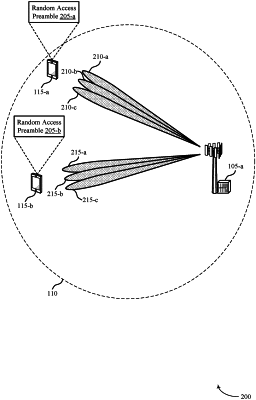| CPC H04W 74/0841 (2013.01) [H04W 56/001 (2013.01)] | 28 Claims |

|
1. A method for wireless communication at a user equipment (UE), comprising:
receiving, from a base station, a configuration of random access resources indicating a quantity of a plurality of random access preambles, a quantity of a plurality of synchronization signal blocks per random access occasion, and a quantity of random access preambles per synchronization signal block, wherein:
the received configuration indicates that each random access preamble of the plurality of random access preambles is available for selection for each synchronization signal block of a plurality of synchronization signal blocks transmitted by the base station, each synchronization signal block of the plurality of synchronization signal blocks transmitted by the base station being associated with a respective beam for reception of the synchronization signal block, the respective beam being associated with a direction for random access preamble communications;
receiving, from the base station, a synchronization signal block of the plurality of synchronization signal blocks;
selecting a random access preamble of the plurality of random access preambles based at least in part on the received configuration, wherein the selected random access preamble is associated with the received synchronization signal block and with each other synchronization signal block of the plurality of synchronization signal blocks transmitted by the base station; and
transmitting the selected random access preamble to the base station in the random access occasion via a single uplink beam associated with a plurality of narrow receive beams indicative of a direction of the UE relative to the base station.
|